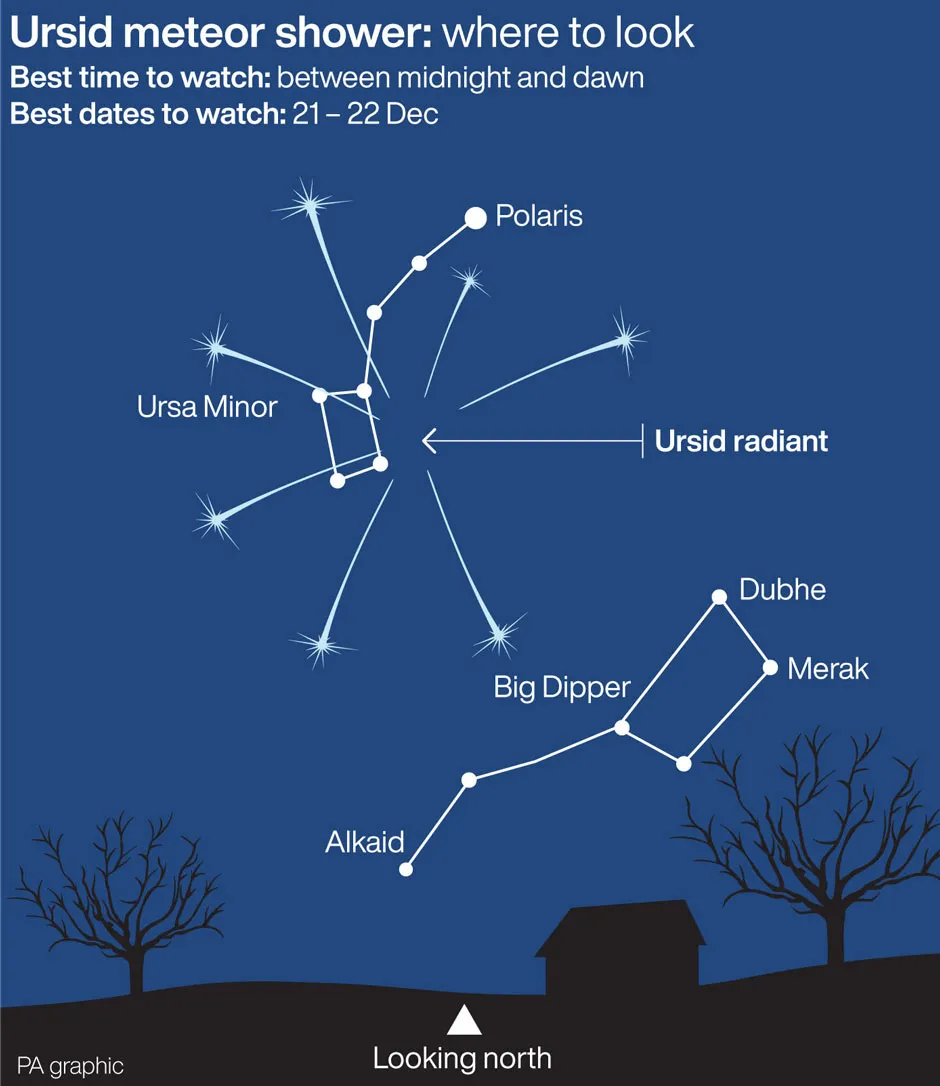Skygazers and astronomers rejoice! You can soon see the Ursid meteor shower – the final display of shooting stars this year – as the Earth passes through a cloud of cometary dust.
The Ursid meteor shower is expected to peak some time during the night of Monday 21 December and will be visible until the early morning of Tuesday 22 December.
This celestial display caused by a stream of debris falling into our atmosphere from the comet 8P/Tuttle (also known as Comet Tuttle). The comet orbits our Sun once every 13 years.
Read more about stargazing:
- A beginner's guide to stargazing, no telescope required
- How can I see the Andromeda Galaxy?
- How can I see Betelgeuse?
The Ursid meteor shower is usually sparse, producing only around five meteors per hour at its peak. However, as the shower’s peak coincides with a quarter Moon, shooting stars will be visible in the night sky. Weather permitting, of course.
The shooting stars appear to radiate from near the Beta Ursae Minoris (Kochab) in the constellation Ursa Minor.
As the meteor shower also occurs around the time of the winter solstice, stargazers have a large window to view the night sky.
The meteors, mostly no bigger than a grain of sand, burn up as they hit the atmosphere at 36 miles per second to produce a shooting stream of light in the sky.
Peak temperatures can reach anywhere from 1,648-5,537°C as they speed across the sky.
How can I see the Ursid meteor shower in the UK?
The best time to observe the shower is between 4.30pm and 6pm UK time GMT on Monday 21 December.
To have a better view of the shower, try getting away from all artificial lights and allow at least 45 minutes for your eyes to adjust to the dark.
The meteors will be visible to the naked eye, so no telescope or binoculars needed.

The celestial display will also coincide with the great conjunction as Jupiter and Saturn will appear just 0.1 degrees apart – roughly equivalent to a fifth of the Moon’s diameter.
This conjunction – where objects appear very close to each other in the sky – will be the closest the two planets have appeared together since 1623.
Both the gas giants will appear to the naked eye as a single bright object in the night sky, which some refer to as the “Christmas star”.
Looking for stargazing tips? Checkout our complete astronomy for beginners UK guide.